

This year marks the 70th anniversary of the Xinjiang Uygur Autonomous Region. China's State Council Information Office released a white paper titled "CPC Guidelines for Governing Xinjiang in the New Era: Practice and Achievements" on Sept. 18, 2025.
The paper noted that living a life of contentment is the ultimate human right, and a happy life for the people is the ultimate goal of development in Xinjiang. "Committed to a people-centered approach, Xinjiang pursues development to improve its people's wellbeing, benefit local society, and strengthen unity," it stressed.
According to the white paper, every year, more than 70 percent of Xinjiang's general public budget is allocated to safeguard and improve people's wellbeing, to ensure that development benefits the people of all ethnic groups in a fair way.
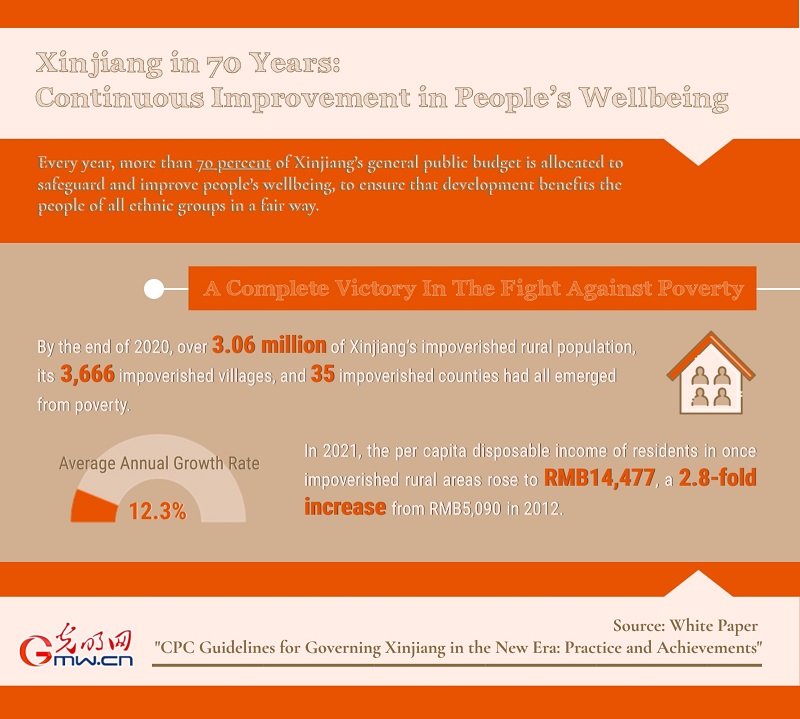
It emphasized that Xinjiang has secured a complete victory in the fight against poverty. By the end of 2020, over 3.06 million of Xinjiang's impoverished rural population, its 3,666 impoverished villages, and 35 impoverished counties had all emerged from poverty. In 2021, the first year after achieving complete victory against absolute poverty, the per capita disposable income of residents in once impoverished rural areas rose to RMB14,477, a 2.8-fold increase from RMB5,090 in 2012, with an average annual growth rate of 12.3 percent.
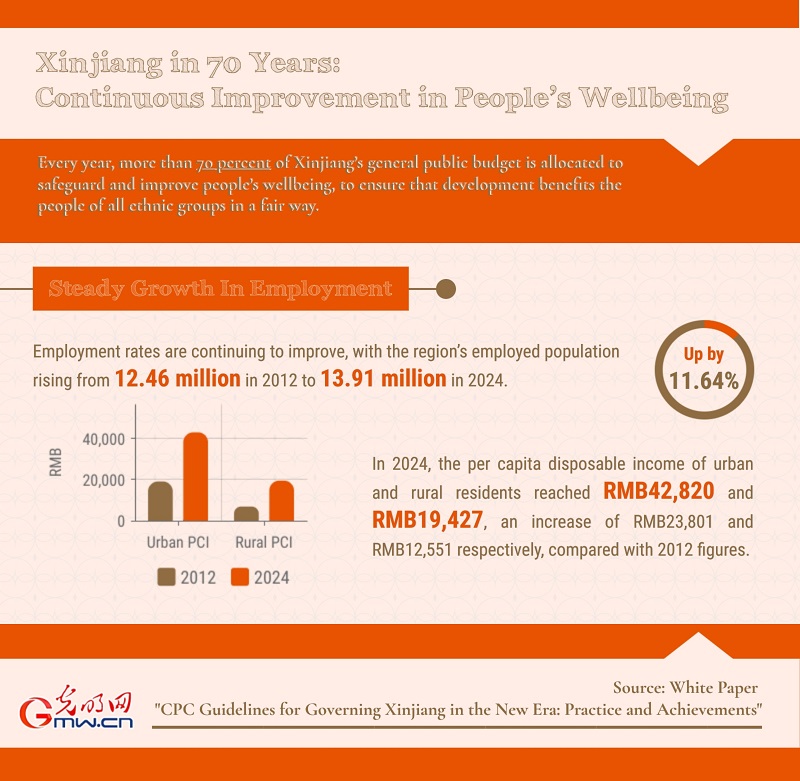
It also pointed out that employment has achieved a steady growth. Employment rates are continuing to improve, with the region's employed population rising from 12.46 million in 2012 to 13.91 million in 2024, up 11.64 percent. In 2024, the per capita disposable income of urban and rural residents reached RMB42,820 and RMB19,427, an increase of RMB23,801 and RMB12,551 respectively, compared with 2012 figures.
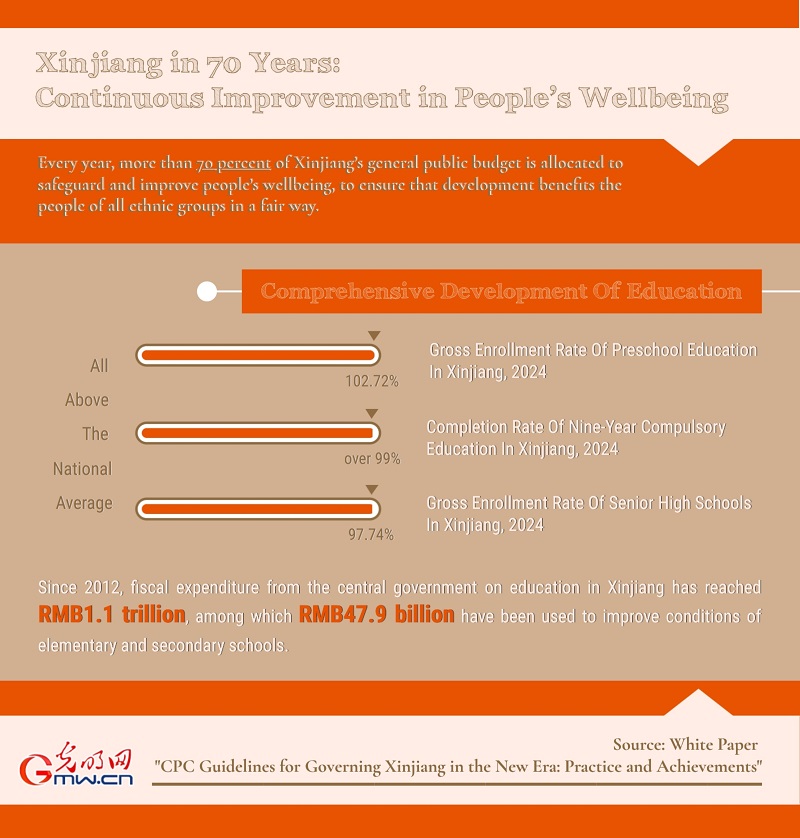
The paper highlighted the comprehensive development of education. In 2024, the gross enrollment rate of preschool education in Xinjiang reached 102.72 percent, the completion rate of the nine-year compulsory education was over 99 percent, and the gross enrollment rate of senior high schools was 97.74 percent, all above the national average. Educational investment has continued to expand. Since 2012, fiscal expenditure from the central government on education in Xinjiang has reached RMB1.1 trillion, among which RMB47.9 billion have been used to improve conditions of elementary and secondary schools.
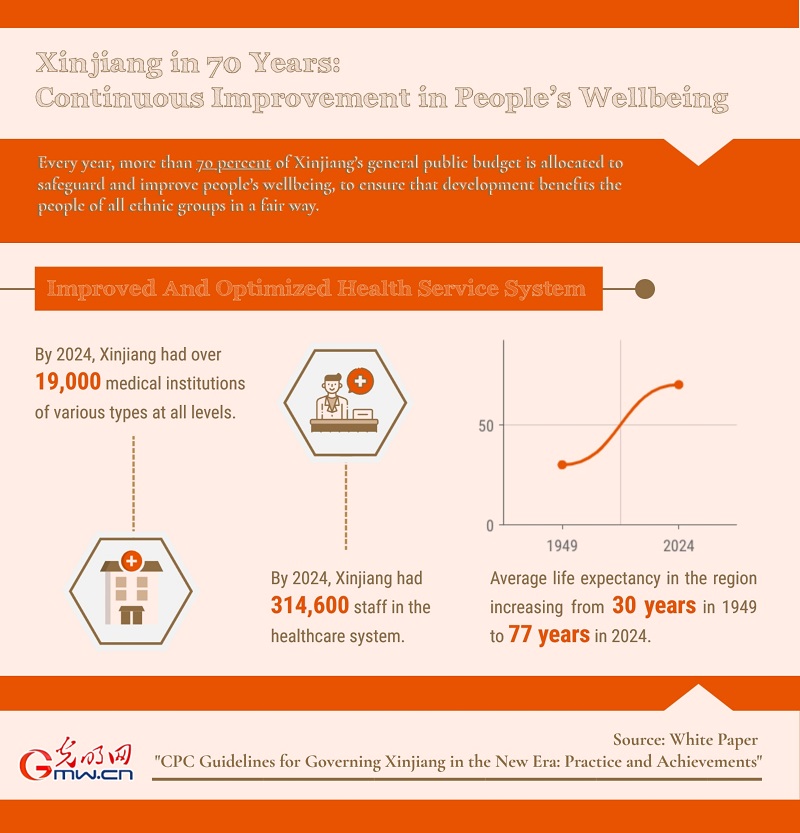
Xinjiang has also improved and optimized its health service system. By 2024, Xinjiang had over 19,000 medical institutions of various types at all levels and 314,600 staff in the healthcare system. The development of the health sector has helped improve people's health, with the average life expectancy in the region increasing from 30 years in 1949 to 77 years in 2024.
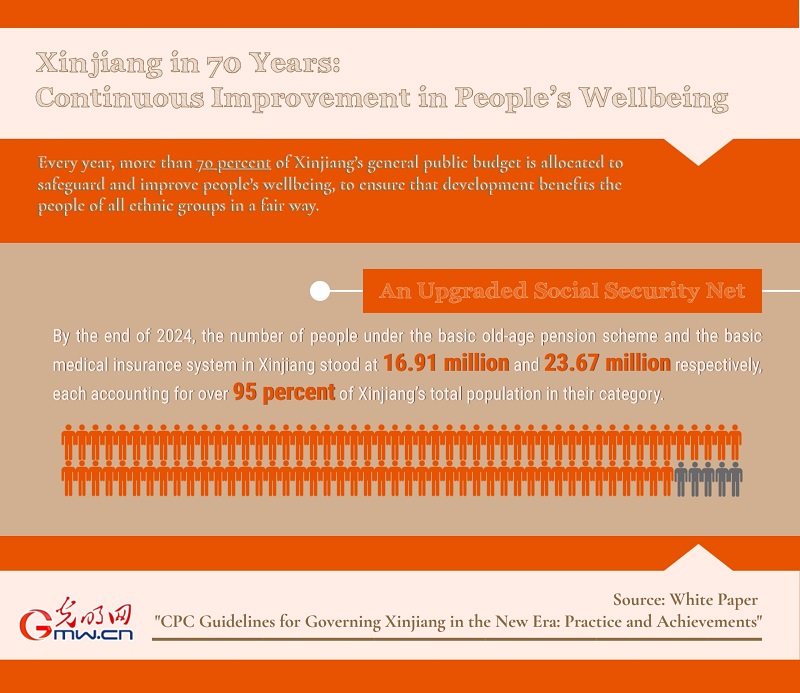
The social security net has been upgraded. By the end of 2024, the number of people under the basic old-age pension scheme and the basic medical insurance system in Xinjiang stood at 16.91 million and 23.67 million respectively, each accounting for over 95 percent of Xinjiang's total population in their category.
点击右上角![]() 微信好友
微信好友
 朋友圈
朋友圈

请使用浏览器分享功能进行分享
